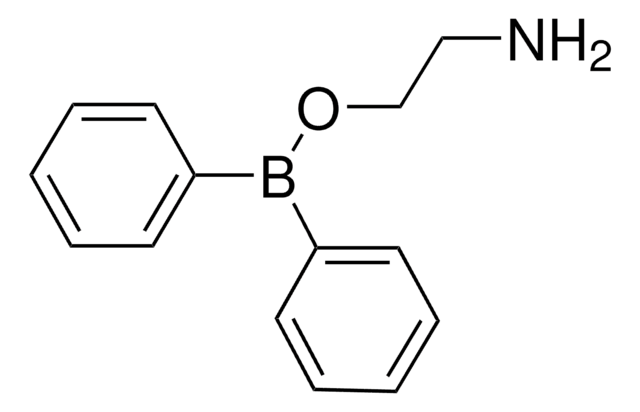P2008
Ácido polianetolsulfónico sodium salt
powder
Sinónimos:
Polianetolsulfonato de sodio
About This Item
Productos recomendados
form
powder
Quality Level
storage condition
(Tightly closed. Dry.)
color
yellow
solubility
water: 1 g/10 mL, clear to hazy, yellow to very dark yellow-orange
SMILES string
C/C=C/C1=CC=C(C=C1)OC.[O-]S(=O)[O-].[Na+]
InChI
1S/C10H12O.Na.H2O3S/c1-3-4-9-5-7-10(11-2)8-6-9;;1-4(2)3/h3-8H,1-2H3;;(H2,1,2,3)/q;+1;/p-2/b4-3+;;
InChI key
JKJBFNAERWARKW-CZEFNJPISA-L
¿Está buscando productos similares? Visita Guía de comparación de productos
Categorías relacionadas
General description
Application
- se ha utilizado como un componente del medio BACTEC plus aerobio/F o de medios de hemocultivo para reducir la barrera de crecimiento bacteriano
- se ha utilizado para inhibir la actividad de la vía clásica (PC) y la vía alternativa (AP)
- puede utilizarse en la preparación de microesferas de gel compuesto bifuncional o polimérico para retirar los colorantes catiónicos
Biochem/physiol Actions
Other Notes
Comparable product
signalword
Warning
hcodes
Hazard Classifications
Eye Irrit. 2 - Skin Irrit. 2 - STOT SE 3
target_organs
Respiratory system
Storage Class
11 - Combustible Solids
wgk_germany
WGK 3
flash_point_f
Not applicable
flash_point_c
Not applicable
ppe
dust mask type N95 (US), Eyeshields, Gloves
Certificados de análisis (COA)
Busque Certificados de análisis (COA) introduciendo el número de lote del producto. Los números de lote se encuentran en la etiqueta del producto después de las palabras «Lot» o «Batch»
¿Ya tiene este producto?
Encuentre la documentación para los productos que ha comprado recientemente en la Biblioteca de documentos.
Los clientes también vieron
Contenido relacionado
We offer agonists, antagonists, modulators and other bioactive small molecules for immune system signaling target identification and validation, as well as a variety of antibiotics, antivirals, and antifungals.
Nuestro equipo de científicos tiene experiencia en todas las áreas de investigación: Ciencias de la vida, Ciencia de los materiales, Síntesis química, Cromatografía, Analítica y muchas otras.
Póngase en contacto con el Servicio técnico







